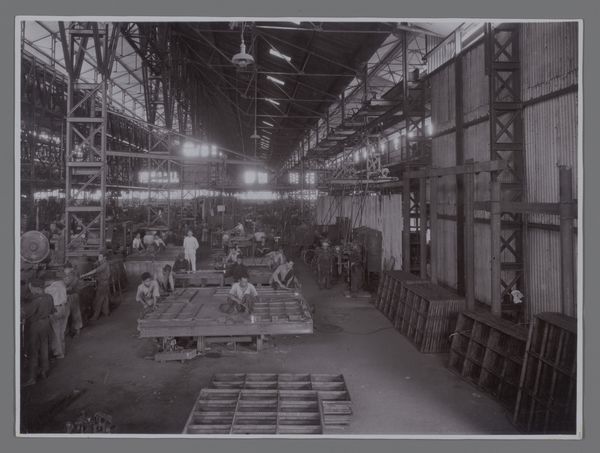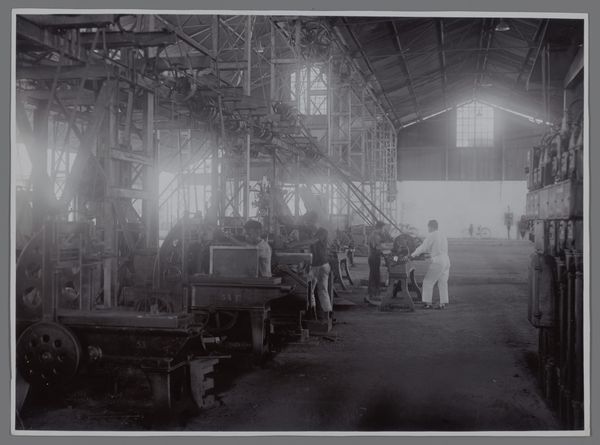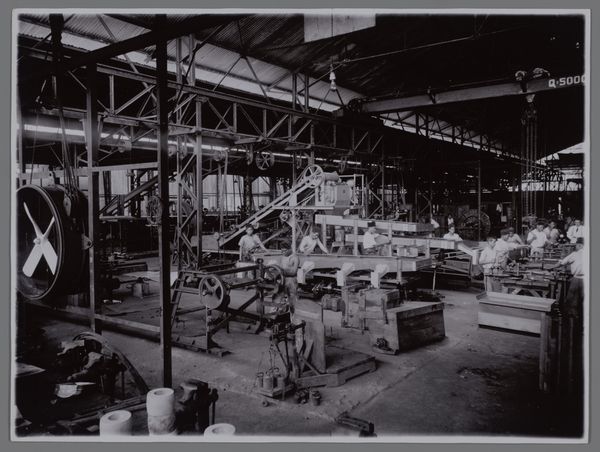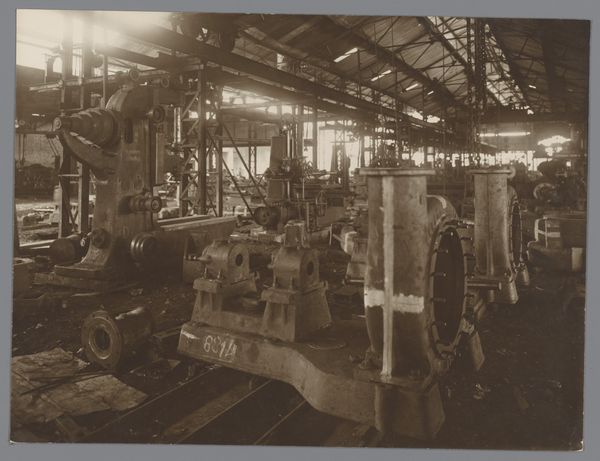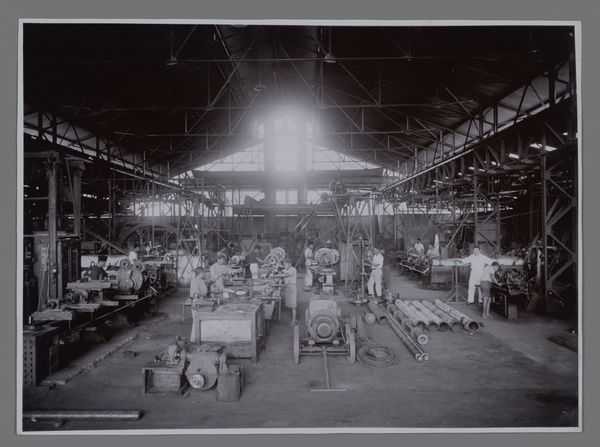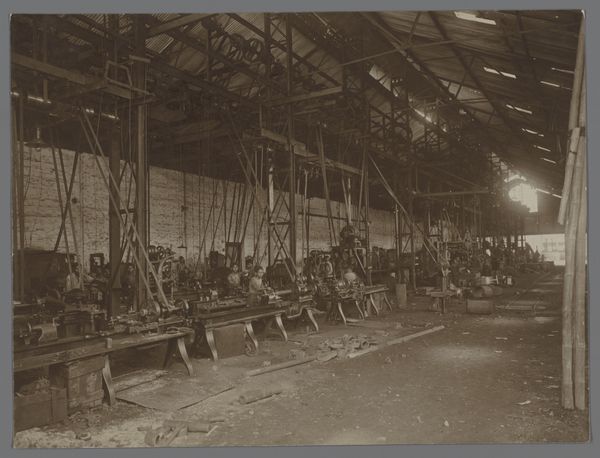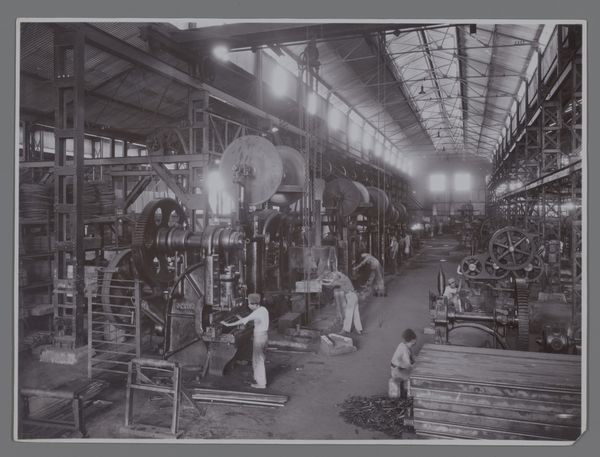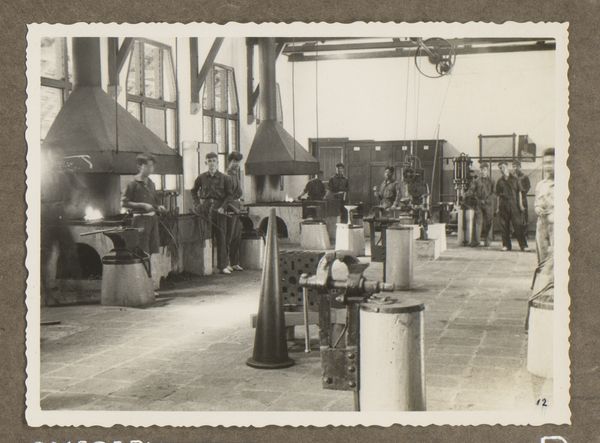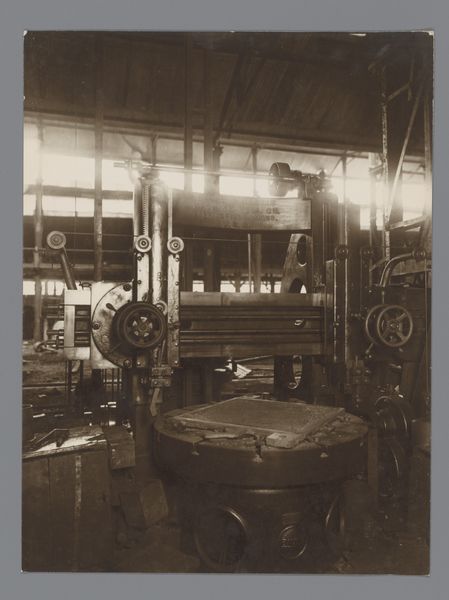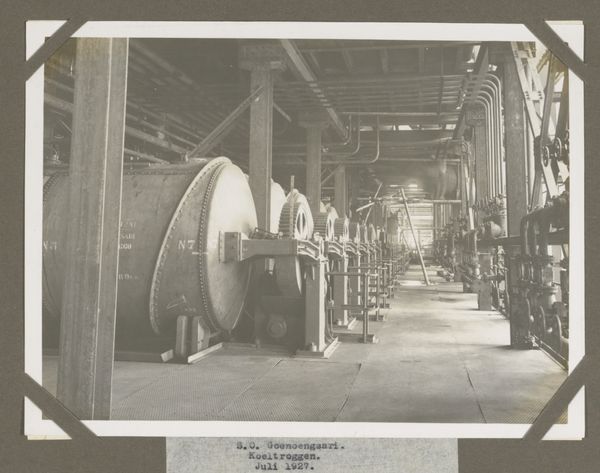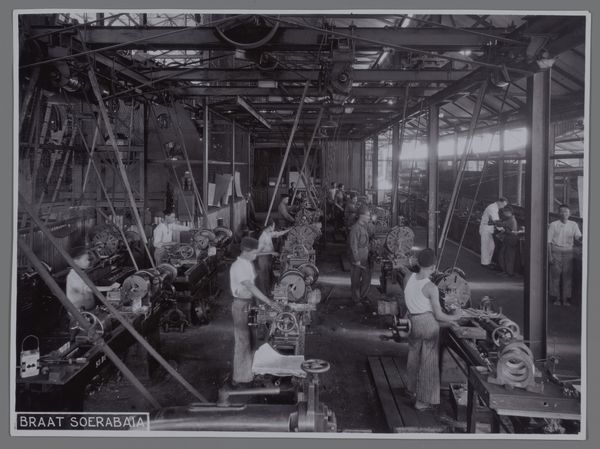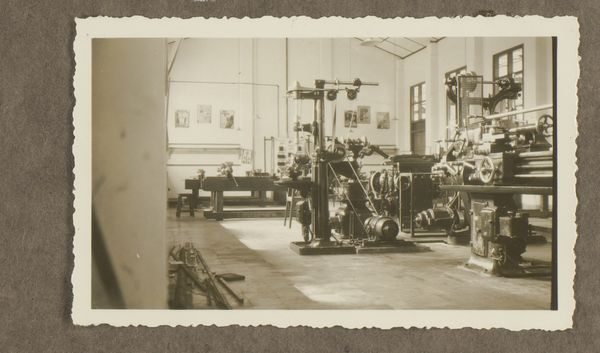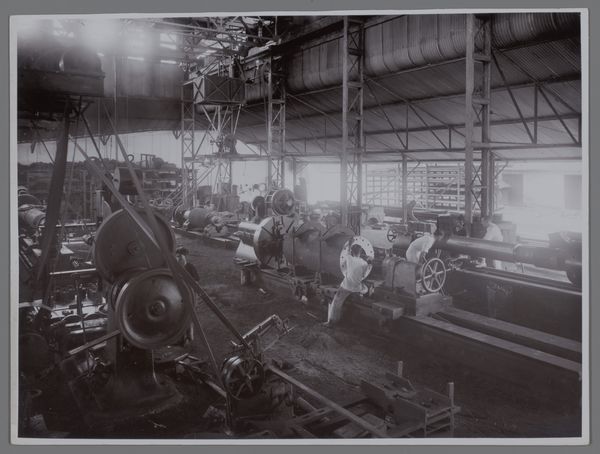
photography
#
landscape
#
photography
#
realism
Dimensions: height 170 mm, width 231 mm
Copyright: Rijks Museum: Open Domain
Editor: So, this is "Draaierij" by Atelier Umbgrove, sometime between 1929 and 1932, done with photography. It feels almost overwhelmingly industrial, but there's a strange sort of balance in the composition, even with all the machinery. What catches your eye in this piece? Curator: The interplay of light and shadow across the mechanical forms is particularly striking. Note how the photographer utilises the contrast to articulate the volumes and textures of the machines. Observe the strong diagonal lines established by the scaffolding. What semiotic significance might we ascribe to these compositional elements? Editor: It's interesting that you point out the lines! I was focusing more on the shapes of the machines themselves. They're almost organic in a way, despite being clearly mechanical. Does the fact that it is a photograph, rather than, say, a painting, influence your analysis? Curator: The photographic medium invites a certain expectation of realism, yet the artistic framing and manipulation of light elevate this beyond mere documentation. Consider the structuralist perspective – how do the individual components of this scene contribute to a larger, overarching system or narrative? Are we merely presented with a view of labor? Editor: I see what you mean about not being 'mere documentation'. There's definitely an artistry in how the photographer chose to represent this factory space. It sounds like you approach art by analyzing the forms and structure inherent in the image. Thanks, that clarifies how to engage with photography in an analytical way! Curator: Precisely. A formalist approach encourages us to understand art as self-referential systems of signs and forms. A fascinating approach to any artistic undertaking!
Comments
No comments
Be the first to comment and join the conversation on the ultimate creative platform.
